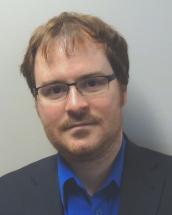
Plasma Surface Engineering for Biomedical Applications
Several technologies developed for the treatment of various diseases involve the use of devices fabricated from synthetic materials, such as polymers. Polymers used for these applications are typically hydrophobic and thus, refractory to cell adhesion and proliferation. The performances of a biomedical devices can by greatly improved by application-specific, tailored surface modifications based on cold plasma processes. These processes have proved efficient in incorporating chosen functional groups on a surface to tune (enhance or deter) its interactivity with foreign biomolecules. During this overview presentation, I will enumerate the basic principles governing the preparation and characterization of plasma engineered surfaces and give application development examples.
After completing a B.Sc. in Chemistry from the University of Montreal, Prof. Pierre-Luc Girard-Lauriault went to École Polytechnique de Montréal where he obtained, under the supervision of Prof. Michael. R. Wertheimer, a Ph.D. in engineering physics for his work on the atmospheric pressure plasma polymerization and chemical characterization of organic thin films. He then headed to the Federal Institute for Materials Research and Testing (Berlin, Germany) for a two-year post-doctoral fellowship where he participated in the development of a novel photoelectron based surface analysis method involving synchrotron radiation. Since May 2011, Prof. Girard-Lauriault is an assistant Professor in the department of Chemical Engineering at McGill University. He is currently pursuing a research program based on Plasma Surface Engineering for Biomedical Applications.

